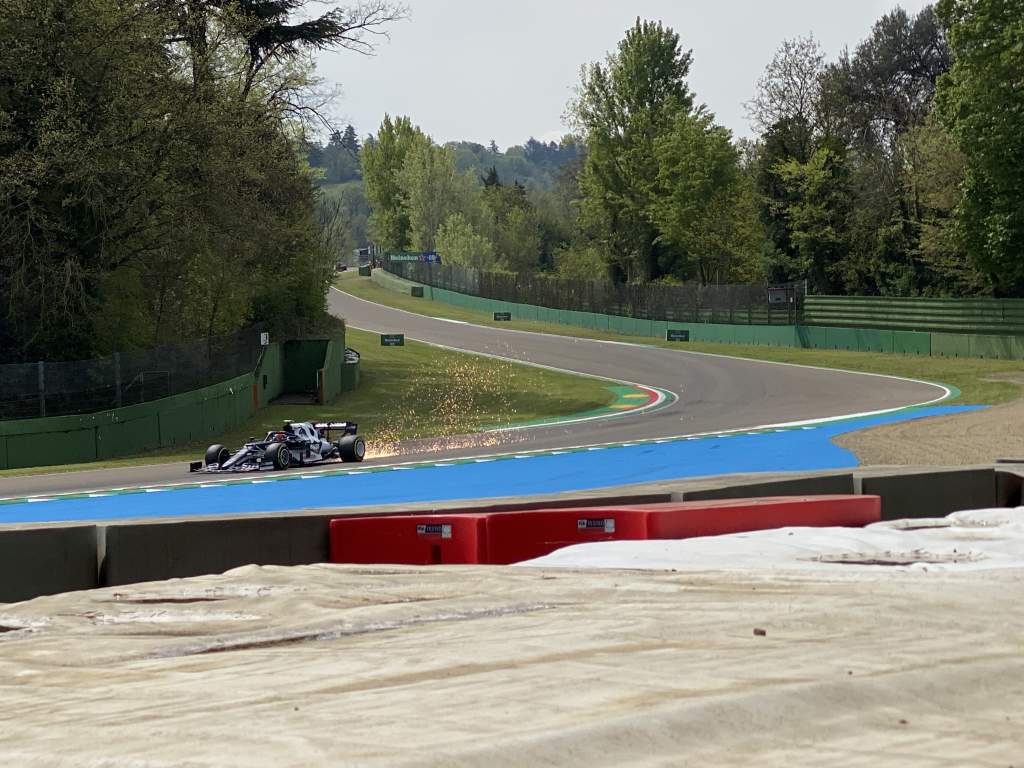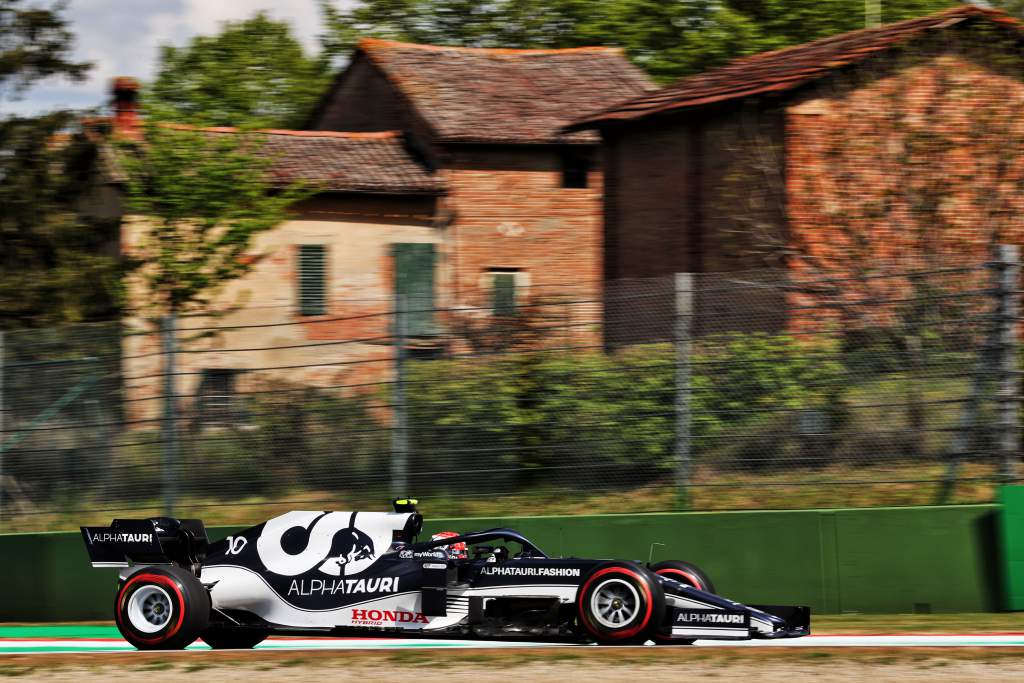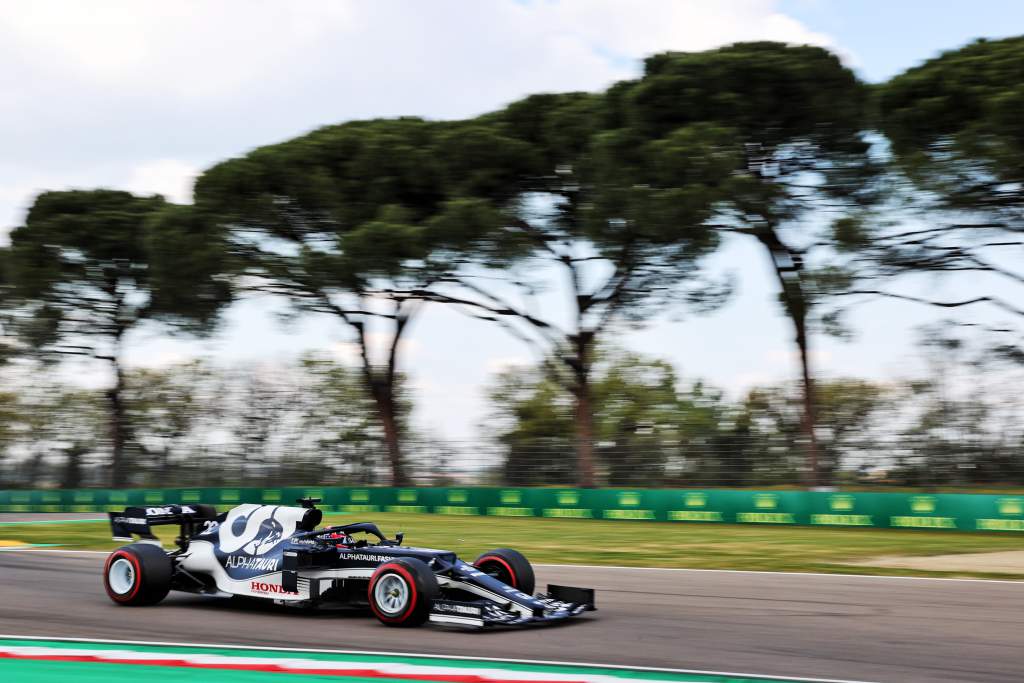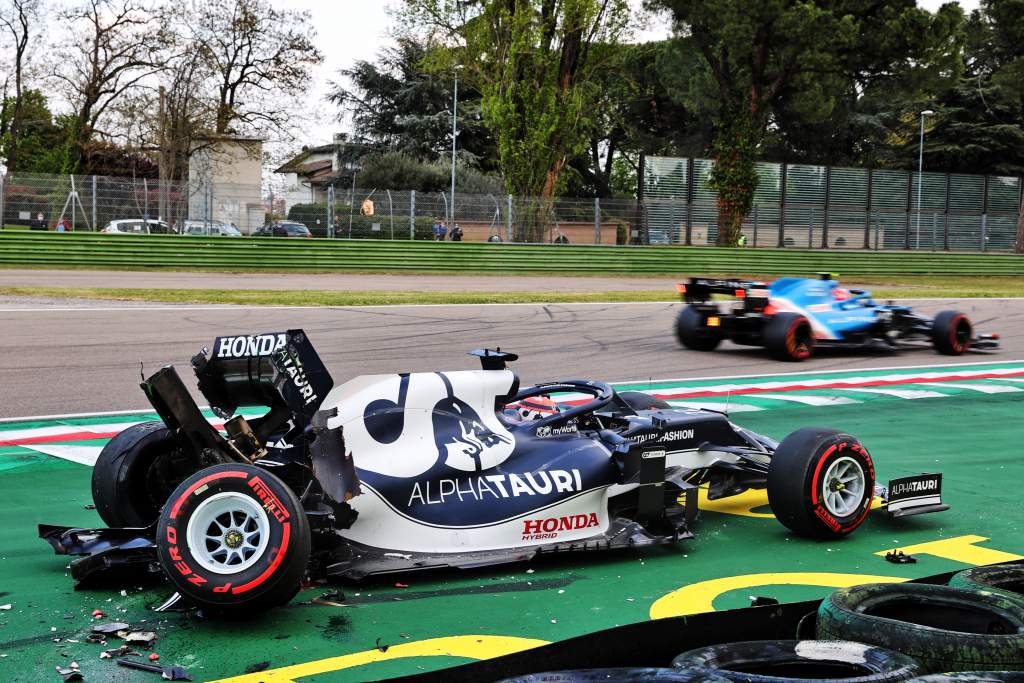Up Next

AlphaTauri’s return of eight points in two races so far is a poor return for what is, by some measures, the best car to drive on the Formula 1 grid. Clearly, it’s not the fastest – based on qualifying pace it’s the fourth-quickest car on average – but it has consistently looked superb on track.
That’s an observation not based on pace, although the car is certainly quick enough to be in the leading midfield group with McLaren and Ferrari despite the races not having gone to plan so far. Instead, it’s how good the car appears dynamically – consistent, stable, with drivers able to commit to corners with confidence and a good balance across a wide range of corners.
You can see this from onboard cameras, as well as from trackside. Having watched both drivers in action across Bahrain pre-season testing and the race weekend, as well as at Imola, from both perspectives there is no car that looks so well-behaved so consistently.

Even the Red Bull, which has often looked mighty, had moments at Imola where it was tricky even for Max Verstappen to get it right on entry. But the AlphaTauri, particularly in Pierre Gasly’s hands, has always delivered.
“It does feel like it allows you to push and really manage to place it where you want, and it reacts to all the set-up changes we do,” said Gasly when asked by The Race about the car characteristics.
“There’s a lot of positives in terms of the balance as well. It’s quite ‘well-connected’ from high speed to low speed, so it gives good direction to set it up. It’s not like as soon as you change something, you’re sacrificing another area of the car, which was more the case last year.”
This is the holy grail for any F1 car. Engineers will talk about achieving a good global compromise over a lap but if you have a car that is aerodynamically and mechanically too sensitive, it can be difficult to achieve this.

AlphaTauri has made significant gains in this area in recent years. Partly, this is down to a change in the approach under technical director Jody Egginton, who succeeded McLaren-bound James Key. While Key is an accomplished technical director, there was a feeling he was taking an approach more suited to a bigger team like McLaren, whereas Egginton’s leadership has focused on optimising the advantages offered by being a sister team to Red Bull and taking pragmatic decisions.
This year, AlphaTauri didn’t take the 2020 Red Bull rear end, which was doable without a token spend. That might have conferred a potential advantage, but the decision was made to stick with the 2019 specification and focus development work on the front end. That’s ensured that this car can be a step forward on last year in all ways.
That undoubtedly contributes to what Gasly calls the car being well-connected – i.e., strong across a range of corners and in transition from high to low speed, and vice versa.

That was very clear in Bahrain, but perhaps shone through even more at Imola. When viewed from a vantage point at Acque Minerale during FP3, Gasly in particular was able to be precise, consistent and carry speed both through the fast, downhill first part and the slightly tighter, uphill second part of the corner.
In the sister car, Yuki Tsunoda was also committed but even when he overdid it, usually the compromise was in the car being on the wrong part of the track than being caught out by any significant balance problem.
At worst, the rear end slightly stepped out in the first part of the corner, while on another occasion he carried in a little too much speed and ended up straddling the exit kerb, compromising his exit into the second part of Acque Minerale.
Come qualifying, Gasly’s Q3 lap to take fifth on the grid was impressive – notably at the Villeneuve chicane where he could use every bit of available track, to the millimetre, at the exit. For a confidence driver like Gasly, who likes to attack on the brakes and carry speed into the corner, it’s the ideal car. In fact, these are the characteristics that any driver will benefit from.
The results have been disappointing. In Bahrain, Gasly hit the back of Daniel Ricciardo’s Mclaren at the early-race restart, ruining his race, before recovering to seventh at Imola after an ill-judged decision to start on wets. Indeed, the team knew that was a mistake by the time the formation lap started, having decided to change to intermediates but not had enough time to do so.

Tsunoda was ninth in Bahrain after briefly dropping as low as 17th early on, and after crashing in qualifying at Variante Alta – perhaps an example of the danger of the car engendering too much confidence – would have scored at Imola had he not spun after an ill-advised attempt to pass Lewis Hamilton.
The results will come, the car is too good for them not to. And based on the limited sample set of circuits so far the AT02 looks like a car that should go well on all circuit types.
All that’s missing in 2021 to date is the execution on race day that should lead to some strong results – and perhaps even a challenge to finish in the top five of the constructors’ championship.





